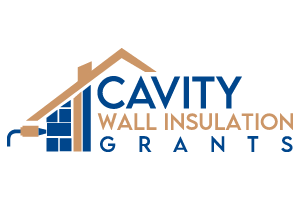Choosing the best cavity wall insulation for your home is pivotal in enhancing energy efficiency and overall comfort. Whether you own an old property, are concerned about damp issues, or simply want to make your living space eco-friendlier, understanding insulation options is key. With the UK government pushing for greener homes through schemes like ECO4, 2025 promises to be a pivotal year in energy-saving improvements.
This guide explores everything you need to know about cavity wall insulation—from types of insulation to damp prevention tips, government grants, and professional installation. By the end, you’ll know how to make an informed decision for your home, and how you could qualify for free insulation.
What Is Cavity Wall Insulation?
Cavity wall insulation involves filling the gap between your home’s inner and outer walls with insulating material. This helps reduce heat loss, making your home warmer and more energy-efficient. Properties built after the 1920s typically have cavity walls, making them ideal candidates for insulation.
Why Should You Insulate?
Cavity wall insulation offers numerous benefits:
- Lower heating costs: Save up to £400 annually on your energy bills.
- Minimise heat loss: Prevent up to one-third of heat from escaping your home.
- Improve comfort: Make your home warmer in winter and cooler in summer.
- Increase energy efficiency: Contribute to achieving a better Energy Performance Certificate (EPC) rating.
- Reduce carbon footprint: Help the environment by using less energy.
Types of Cavity Wall Insulation
When it comes to materials, each offers unique advantages depending on the property type and location. Here are the primary options:
1. Mineral Wool
Mineral wool is an eco-friendly material made from recycled fibres. It is lightweight, fire-resistant, and provides excellent thermal and sound insulation.
Pros:
- Great for energy savings (£200–£300 annually).
- Fire retardant and resistant to moisture absorption.
Cons:
- Slightly less effective at preventing damp in very wet climates.
- Higher installation costs compared to polystyrene.
2. Polystyrene Beads
Polystyrene beads are lightweight, moisture-resistant, and provide excellent thermal insulation. They are popular for properties in humid areas.
Pros:
- High resistance to moisture, making them ideal for damp-prone homes.
- Long-lasting insulation with minimal degradation.
Cons:
- Some environmental concerns due to non-biodegradable material.
- Higher cost compared to mineral wool.
3. Polyurethane Foam
Polyurethane foam is one of the most effective insulation materials for blocking airflow and improving energy efficiency.
Pros:
- Superior thermal performance.
- Effective for older homes with uneven cavities.
Cons:
- Costliest insulation option.
- Installation requires experienced professionals.
Best Cavity Insulation Options for 2025
For Old Houses
Older UK homes often have uneven or narrow cavities. For such properties, Polyurethane Foam is the most effective choice due to its ability to expand and seal gaps completely.
For Damp-Prone Properties
If your property is prone to damp, Polystyrene Beads offer the best protection. Their non-absorbent qualities significantly minimise the risk of moisture passing through.
For Eco-Friendly Living
If sustainability is a priority, opt for Mineral Wool, which is made from recycled materials and has a lower environmental impact compared to synthetic options.
For Cost-Effectiveness
For those on a budget or availing government grants, Mineral Wool provides an affordable yet reliable insulation solution with considerable energy savings.
Damp Prevention and Cavity Wall Insulation
Improperly installed insulation or unsuitable materials can lead to damp problems. Here’s what you need to know to keep your walls dry and your home safe.
How Does Cavity Insulation Impact Damp?
When installed correctly, cavity wall insulation won’t cause dampness. However, pre-existing issues like structural cracks or poorly sealed cavities can create moisture buildup.
Tips to Avoid Damp:
- Conduct a thorough property survey before installation to assess structural integrity.
- Opt for non-absorbent materials like polystyrene beads in damp-prone regions.
- Ensure professional installation to seal cavities effectively and prevent moisture ingress.
- Regularly maintain and inspect your home’s walls for signs of damage or wear.
Grants and Funding for Cavity Wall Insulation
The UK government provides grants to make homes more energy-efficient. Schemes like ECO4 and the Great British Insulation Scheme (GBIS) offer significant support to eligible homeowners and tenants.
Are You Eligible for Free Insulation?
You may qualify for free insulation if you meet any of these criteria:
- Annual household income of £31,000 or less.
- Your property has an EPC rating of D, E, F, or G.
- Your home falls under specific council tax bands:
- England: A–D
- Scotland/Wales: A–E
- You receive means-tested benefits, such as:
- Universal Credit
- Child Tax Credit
- Pension Guarantee Credit
How to Check Eligibility and Apply
Applying is simple:
- Visit Free Cavity Wall Insulation Grants.
- Use the eligibility checker by entering basic property and income information.
- Book a free home survey to confirm your suitability.
- Schedule your insulation installation.
Professional Installation and Guarantees
Why Choose a Professional Installer?
Professional installation ensures your cavity wall insulation is done correctly, preventing issues like damp or uneven coverage. A reliable installer will:
- Conduct pre-installation surveys.
- Use high-quality materials tailored to your property.
- Provide a 25-year insurance-backed guarantee for peace of mind.
Real-Life Success Stories
Case Study 1
Chloe Smith, Luton: “Thanks to the free insulation grant, I saved hundreds and my heating bills dropped significantly. The installation process was quick, and the results were immediate!”
Case Study 2
David Collins, Manchester: “My old home finally feels warm during winter! The team professionally installed mineral wool, and the 25-year guarantee is reassuring.”
Why Cavity Wall Insulation Is Worth It in 2025
Investing in cavity wall insulation is one of the most cost-effective ways to enhance your home’s energy efficiency, reduce your carbon footprint, and save money. Thanks to government grants, this crucial upgrade is now accessible to many UK households.
If you’re eligible, act now! Visit https://freecavitywallinsulationgrants.co.uk/ to check your eligibility and set your home up for a warmer, more sustainable future.
